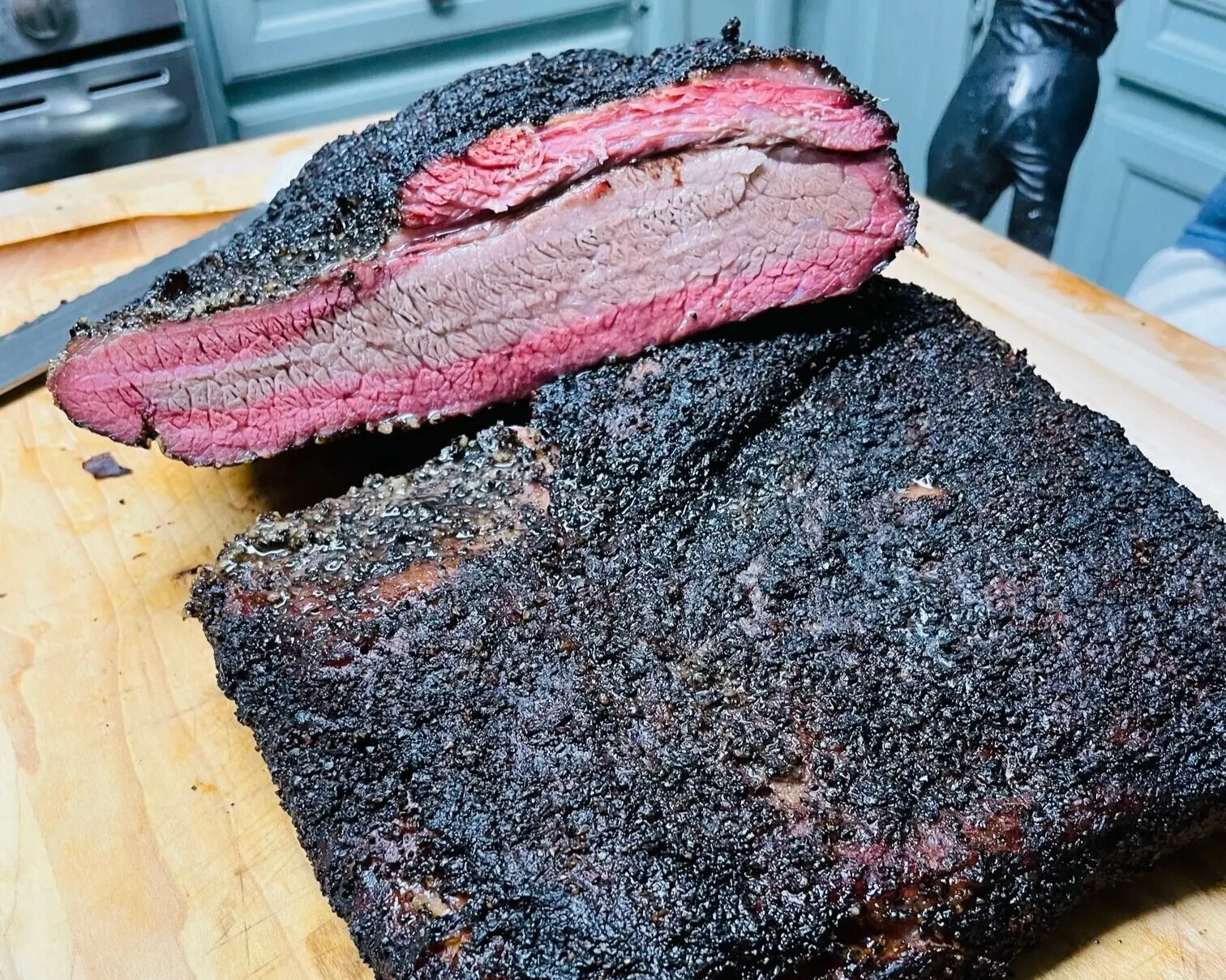Smoked meat is a culinary technique that has been used for centuries to add flavor and tenderness to various types of meat. One of the most coveted characteristics of well-smoked meat is the pink smoke ring that forms on the outer layer of the meat. This pink ring is not only visually appealing but also a sign of a perfectly smoked piece of meat. In this article, we will explore what exactly the pink smoke ring is and how it is formed during the smoking process.
Understanding the Science Behind the Pink Smoke Ring
The pink smoke ring is a result of a chemical reaction that occurs between the smoke, meat, and myoglobin, a protein found in muscle tissue. When meat is exposed to smoke, it absorbs various compounds, including nitrogen dioxide (NO2). During the smoking process, NO2 is converted to nitric oxide (NO) in the presence of heat. Nitric oxide then reacts with myoglobin to form a stable pink-colored compound known as nitrosylhemochromogen.
The formation of this pink-colored compound is dependent on several factors, including the concentration of NO2 in the smoke, the temperature of the smoking environment, and the amount of myoglobin present in the meat. The pink smoke ring is typically found in the outer layer of the meat, as it is the part that is exposed to the smoke for the longest duration.
Factors Affecting the Formation of the Pink Smoke Ring
Several factors can influence the formation and intensity of the pink smoke ring in smoked meat:
- Smoke Concentration: The higher the concentration of NO2 in the smoke, the more pronounced the smoke ring will be.
- Temperature: The optimal temperature range for the formation of the pink smoke ring is between 225°F and 250°F (107°C and 121°C). Higher temperatures can result in the denaturation of myoglobin, inhibiting the formation of the pink ring.
- Time: The longer the meat is exposed to the smoke, the deeper and more distinct the smoke ring will be.
- Meat Type: Different types of meat contain varying amounts of myoglobin, which can affect the intensity of the pink smoke ring. For example, beef and pork typically have higher myoglobin content compared to poultry.
Tips for Achieving a Perfect Pink Smoke Ring
If you're aiming to achieve a beautiful pink smoke ring in your smoked meat, here are some tips to consider:
- Choose the right wood: Different types of wood produce varying levels of NO2, which can impact the formation of the smoke ring. Woods such as hickory, oak, and cherry are known to produce good smoke rings.
- Maintain the right temperature: Keep the smoking temperature within the optimal range of 225°F to 250°F (107°C to 121°C) to promote the formation of the pink smoke ring.
- Allow enough time for smoking: Give the meat enough time in the smoker to ensure proper absorption of smoke and the development of the smoke ring.
- Consider using a curing agent: Some pitmasters use curing agents, such as sodium nitrate or celery juice, to enhance the formation of the pink smoke ring.
Q: Does the pink smoke ring affect the taste of the meat?
A: The pink smoke ring is primarily a visual characteristic and does not significantly impact the taste of the meat. The flavor primarily comes from the smoke and seasonings used during the smoking process.

Q: Can you achieve a smoke ring with other cooking methods?
A: The pink smoke ring is unique to the smoking process. Other cooking methods, such as grilling or roasting, do not typically result in the formation of a smoke ring.
Q: Can you achieve a smoke ring with gas or electric smokers?
A: While gas and electric smokers can produce delicious smoked meat, they may not generate enough NO2 to achieve a prominent smoke ring. Traditional wood or charcoal smokers are often preferred for achieving a deep and distinct smoke ring.
In Conclusion
The pink smoke ring is a highly sought-after characteristic in smoked meat, indicating that the meat has been properly smoked. It is formed through a chemical reaction between the smoke, meat, and myoglobin. While the pink smoke ring doesn't affect the taste of the meat, it adds visual appeal and is often considered a sign of skilled barbecue craftsmanship. By understanding the science behind the pink smoke ring and following the tips mentioned, you can enhance your smoking skills and achieve a beautiful pink smoke ring in your smoked meat.
If you want to know other articles similar to What is the pink smoke ring in smoked meat? exploring formation and factors you can visit the Smoking techniques category.


Related Articles